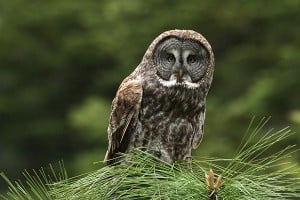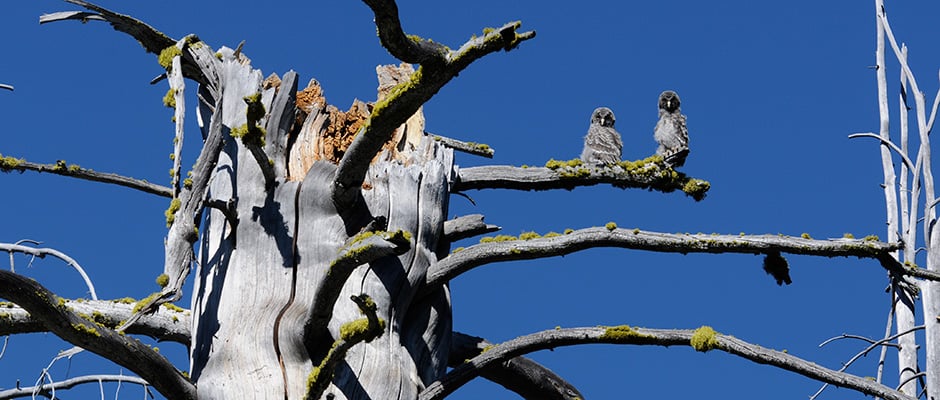Share this article
Researchers Study Endangered Owl’s Nesting Sites
There’s very little known about great gray owls (Strix nebulosa) besides the fact that they’ve been endangered in California since 1980.
Previous studies have pointed to the impact of nest availability on population growth and so, in an effort to learn more about this rare, yellow-eyed, gray and brown-feathered species, researchers in California recently examined characteristics that the owls appear to look for when choosing nest sites.

The great gray owl, pictured above, is listed as endangered in the state of California. Research shows that nest-site availability and access to prey play a major role in the species’ population growth.
Image Credit: Cameron Rognan
As part of their study published in the Journal of Wildlife Management, researchers gathered records that dated back to 1973 of owl nest sites in California’s Sierra Nevada Mountains. They visited 47 sites, measuring nest site characteristics such as choice of tree species, canopy cover, snag density, and tree condition — and found that the species has diverse types of habitats and nest trees. “Of our major findings, one of the most important was that great gray owls used a greater diversity of nest sites than we previously knew,” said Joanna Wu, lead author of the study, biologist at The Institute for Bird Populations, and member of The Wildlife Society.
For instance, while owls mostly nested in broken-top red firs, white firs, or black oak, Wu and her team found them nesting in other places such as platforms in oak trees and even a stick nest. Factors such as tree size to accommodate body size and dense canopy with space to enter the nest also appeared to influence nest selection.
Wu is using these and other findings to develop a state-wide conservation strategy on great gray owls. The strategy, which will be completed in the fall or winter, will include a history of the species’ conservation along with potential threats facing the owls and management actions that biologists can implement.
“Great gray owls have always been rare, and it’s hard to know if there are factors limiting their growth or if they are naturally occurring at a very low density,” Wu said. “We know so little about them that everything we know now is great.”
Header Image:
Two great gray owls perch on a decaying tree. Researchers recently found that the species is much more flexible when it comes to choosing nesting sites than scientists previously thought.
Image Credit: Joe Medley








